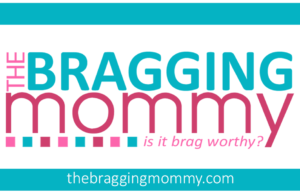
Kratom is a herbal supplement that has become increasingly popular for its potential benefits. Let’s suppose you decided to try kratom. After researching various strains, you finally choose the perfect one for your needs. You are excited to make your purchase, you head to an online store, ready to click “buy.”
But then it hits you: How do I know if this is a trustworthy vendor? What if the product is fake or contaminated? These are valid concerns with a market like Kratom. It is growing rapidly but lacks regulation in many places. So, how can you avoid potential dangers and ensure that your online Kratom shopping experience is both safe and satisfying?
Why Read This Article?
In this article, we’ll explore some of the red flags to look out for when buying Kratom online and share tips on how you can avoid falling into traps that could lead to poor-quality products or even health risks. After all, your health and well-being are at stake. It’s important to make informed decisions when purchasing Kratom online.
1. Lack of Transparency
One of the first red flags you should look for is a vendor who is unclear about their product’s sourcing and quality. Transparency is a key indicator of a reputable Kratom seller. If a vendor doesn’t provide clear information about where their Kratom comes from, how it’s grown, or how it’s processed, you should proceed with caution.
Why It’s a Red Flag:
Real Kratom suppliers are proud of their sourcing practices. They should have no issue sharing details about the farms where their Kratom is grown, their production methods, and the quality control processes they follow. A lack of transparency suggests the vendor might be hiding something, such as poor-quality Kratom or unsafe harvesting practices.
How to Avoid It:
1. Look for detailed product descriptions. These include information about the strain’s origin, cultivation practices, and how it’s processed.
2. Reputable sellers will often mention that their Kratom is sustainably harvested or that they use organic farming practices.
3. Always check for lab reports that confirm the Kratom’s purity and potency.
2. No Third-Party Lab Testing
One of the most important things to verify is whether the product has been third-party tested for safety, purity, and potency. There is a higher chance of contamination. To ensure you’re getting a safe and high-quality product, lab testing is a must.
Why It’s a Red Flag:
If a vendor does not provide third-party lab testing or refuses to share their lab results with you, there’s a strong possibility that their Kratom could be contaminated. Lab testing helps verify that the product is free of harmful substances. Also ensures the product contains the promised alkaloids that make Kratom effective.
How to Avoid It:
● Always ask the vendor for a third-party lab report from an independent facility that has tested the Kratom for contaminants and potency.
● Trusted vendors will provide easy access to these lab reports, either on the product page or upon request.
3. Unbelievably Low Prices
It’s attractive to grab the cheapest deal available if you’re new to Kratom. But as with most things, if a price seems too good to be true, it probably is. Kratom is not cheap to produce. If you find a deal that is significantly lower than the market average, it’s a good idea to be careful.
Why It’s a Red Flag:
Vendors offering Kratom at prices well below the market average could be neglecting quality or purity. They may be selling contaminated Kratom or a product that’s been mixed with fillers. Additionally, low prices can often be a sign of a lack of transparency or questionable business practices.
How to Avoid It:
● Compare prices from several reputable vendors. Prices can vary. Kratom typically ranges within a specific price range depending on the strain and quantity.
● Be careful of extremely low-priced Kratom. If a deal seems too good to be true, trust your gut feeling and look elsewhere for a more reliable supplier.
4. Lack of Customer Reviews
Customer feedback is one of the best ways to judge the quality of a product and the reliability of a vendor. If a website has no customer reviews or only contains unclear reviews, it’s time to question the vendor’s validity.
Why It’s a Red Flag:
Vendors who refuse to show or have no customer feedback could be hiding negative reviews or simply don’t have enough satisfied customers for their products.
How to Avoid It:
● Look for detailed, verified customer reviews. Real customer experiences are valuable and can give you a good idea of the quality of the product and customer service.
● Use third-party review sites or forums where Kratom users share their experiences and give ratings to sellers.
● Pay attention to negative reviews to see if there are issues with quality, shipping, or customer service.
5. Poor or Nonexistent Customer Service
A reliable Kratom seller will provide good customer service and be responsive to questions. If a vendor is hard to reach, offers unclear responses, or doesn’t answer your questions, that’s a major red flag.
Why It’s a Red Flag:
If a seller can’t provide proper customer support or fails to communicate with you, it could indicate that they’re not serious about maintaining customer satisfaction or quality control. This might also suggest that they are operating without proper control. This can be risky when dealing with an unregulated substance like Kratom.
How to Avoid It:
● Test the vendor’s customer service by sending them an inquiry before making a purchase. A reputable vendor should respond quickly and with helpful, clear answers.
● If the vendor has a phone number or live chat, try reaching out through those channels to see how quickly and efficiently they respond.
6. Misleading Claims or Over-Promises
Vendors who make exaggerated, unrealistic claims about the benefits of products should raise a red flag. Kratom has its potential benefits, but it is not a miracle cure for every health issue.
Why It’s a Red Flag:
If a vendor claims that their Kratom will cure certain diseases, help with addiction recovery, or provide benefits that are not backed by research, they could be misleading you. Such claims are not only dishonest but could also indicate that the vendor is trying to use the hype around Kratom for profit.
How to Avoid It:
● Be careful of vendors who make health claims that sound too good to be true. Look for products that focus on the known benefits of Kratom, such as mood enhancement, increased energy, and relief.
● Rely on customer reviews and scientific research to guide your expectations of the effects of kratom.
7. Unprofessional Website Design
A vendor’s website says a lot about their validity. A flashy website doesn’t necessarily mean high quality. A poorly designed or unprofessional website can indicate that the seller doesn’t invest in their business or care about customer experience.
Why It’s a Red Flag:
A sloppy or unprofessional website can point to a lack of attention to detail. This might extend to the quality of their products. A website that is difficult to navigate, lacks important information, or has broken links can be a sign that the business is not reliable.
How to Avoid It:
● Look for clear product descriptions, a user-friendly shopping experience, and detailed company contact information.
● If the website seems unprofessional or outdated, it may be worth reconsidering your purchase.
8. Shipping and Return Policy Issues
A trustworthy Kratom vendor should have a clear and reasonable shipping and return policy. If the website doesn’t provide this information or the policies seem confusing, that’s a red flag.
Why It’s a Red Flag:
Poor or unclear shipping and return policies can signal a lack of professionalism or customer care. If a vendor doesn’t offer clear return procedures or has an unclear shipping timeline, it could indicate a seller who is not committed to customer satisfaction.
How to Avoid It:
● Always read the shipping and return policies before purchasing.
● Choose a vendor who offers reasonable return and exchange options in case the product is defective or doesn’t meet your expectations.
Conclusion
Online Kratom shopping can be a convenient way to access high-quality products, but it comes with its challenges. By being aware of the red flags we’ve discussed, such as a lack of transparency, no third-party lab testing, and misleading claims, you can avoid falling for scams or purchasing low-quality products. Always take the time to do your research, read reviews, and verify the credibility of the vendor before making a purchase.
When you shop with caution and buy from trusted, reputable vendors, you can enjoy the benefits of Kratom with peace of mind. Your health is worth the effort!


